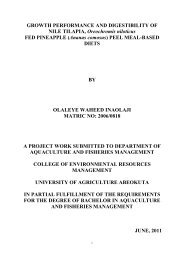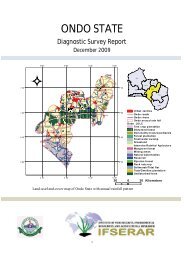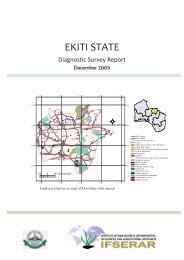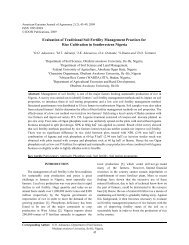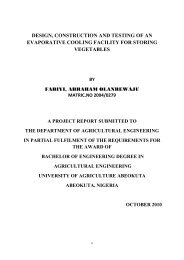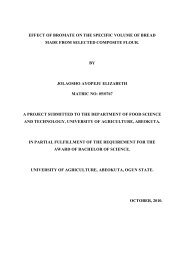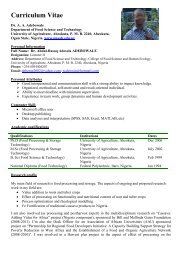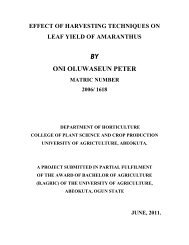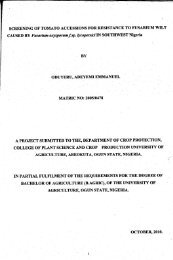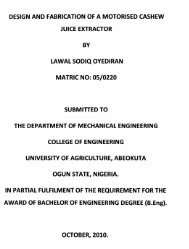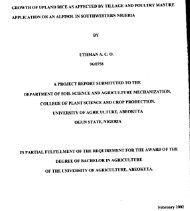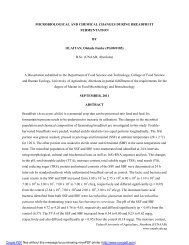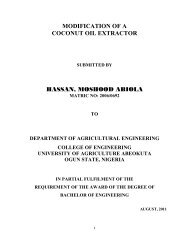consumer acceptability of spiced composite bread - The Federal ...
consumer acceptability of spiced composite bread - The Federal ...
consumer acceptability of spiced composite bread - The Federal ...
You also want an ePaper? Increase the reach of your titles
YUMPU automatically turns print PDFs into web optimized ePapers that Google loves.
2.1.3 WHEAT MILLING<br />
Present-day milling processes begin with the cleaning <strong>of</strong> kernels. Wheat arriving at a mill is<br />
generally mixed with such matter as straw, chaff, pebbles, earth, and seeds <strong>of</strong> various kinds.<br />
Coarse and fine material is removed by passing the wheat through sieves, but seeds and other<br />
objects that approximate wheat grains in size must be extracted by special means. Cylinders<br />
and disks that have perforations <strong>of</strong> various sizes not only separate remaining foreign particles<br />
but also segregate wheat kernels by size. Next, the wheat is scoured by being passed through<br />
an emery-lined cylinder. Tempering, a process by which the moisture content is adjusted for<br />
easiest separation <strong>of</strong> kernel from husk, is the last step in preparing the grain for grinding.<br />
Because <strong>of</strong> the development <strong>of</strong> wheat varieties that do not require the heavy friction provided<br />
by millstones, most grinding is done in roller mills. Corrugated rollers gradually reduce<br />
wheat kernels to powder, effecting separation <strong>of</strong> kernel and husk. Initial rolling takes place in<br />
three to six stages, the last stage <strong>of</strong> which yields bran, middlings, and flour. Finished flour<br />
consists almost entirely <strong>of</strong> endosperm, or nutritive tissue. Middlings are composed <strong>of</strong><br />
fragments <strong>of</strong> endosperm, fragments <strong>of</strong> husk, and husk fragments with adhering particles.<br />
Bran, the broken husk <strong>of</strong> the grain, is used as feed for livestock and to provide roughage in<br />
some types <strong>of</strong> breakfast cereals.<br />
Between each <strong>of</strong> the stages <strong>of</strong> rolling, and following the final stage, the ground product is<br />
sifted, a process referred to by millers as bolting. Three types <strong>of</strong> sifters are in common use:<br />
the plansifter, composed <strong>of</strong> a series <strong>of</strong> sieves arranged one above another; the reel, covered<br />
with silk bolting cloth or wire <strong>of</strong> a gauge that retains middling; and the centrifugal, an<br />
adaptation <strong>of</strong> the reel equipped with beaters that hurl the product the length <strong>of</strong> the reel.<br />
6



